

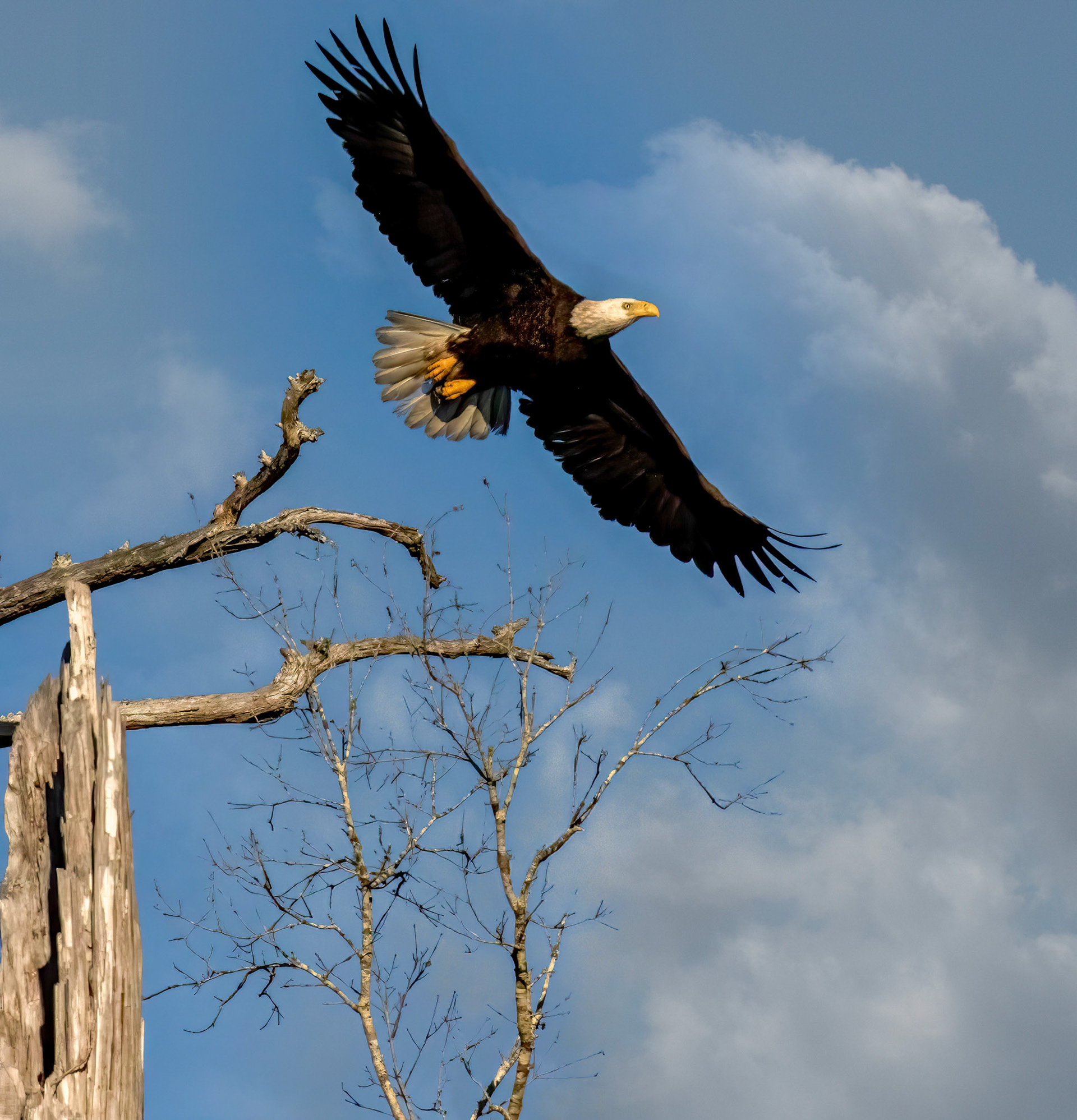
Bald Eagle
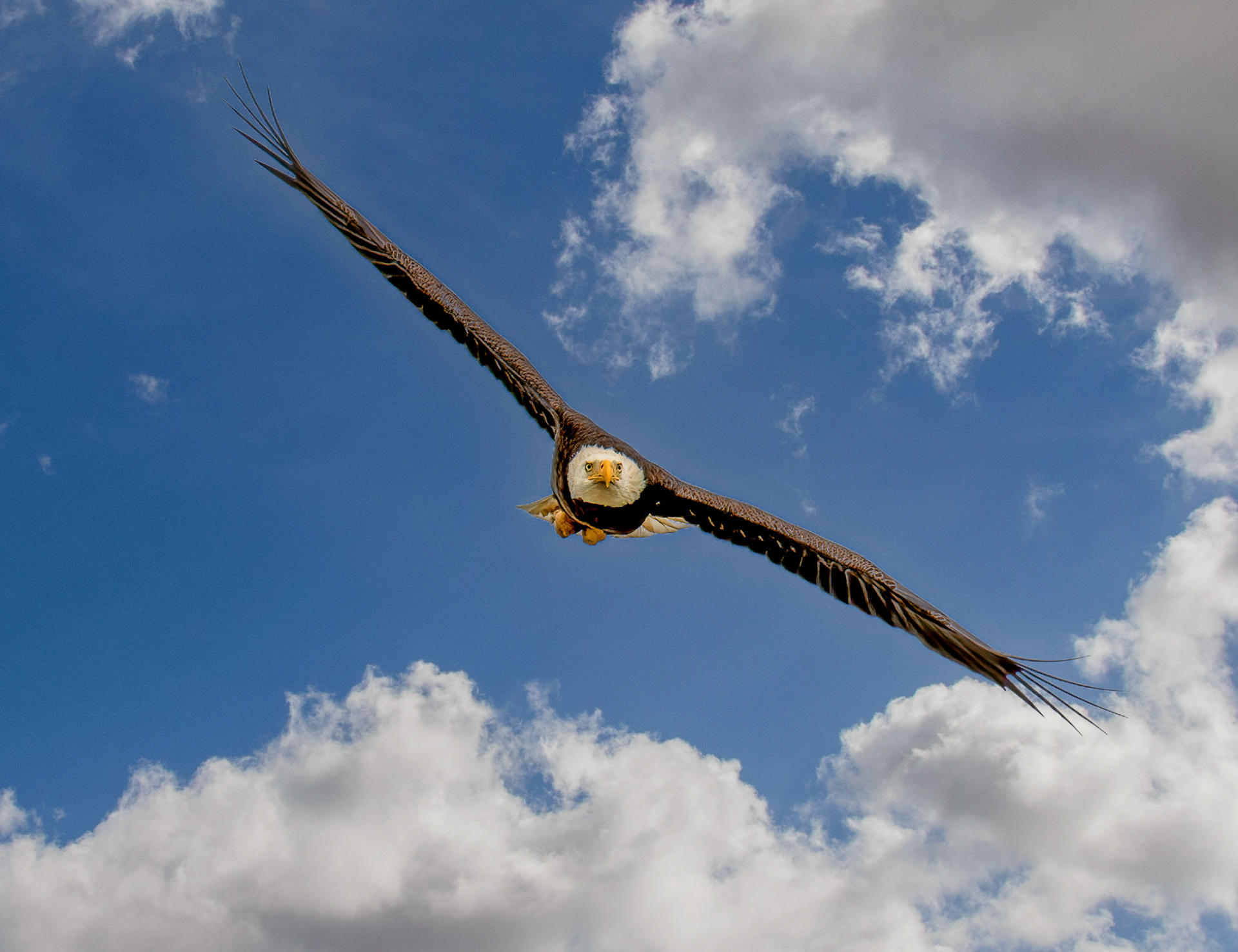

Both adults build the nest


Female arranges nesting material


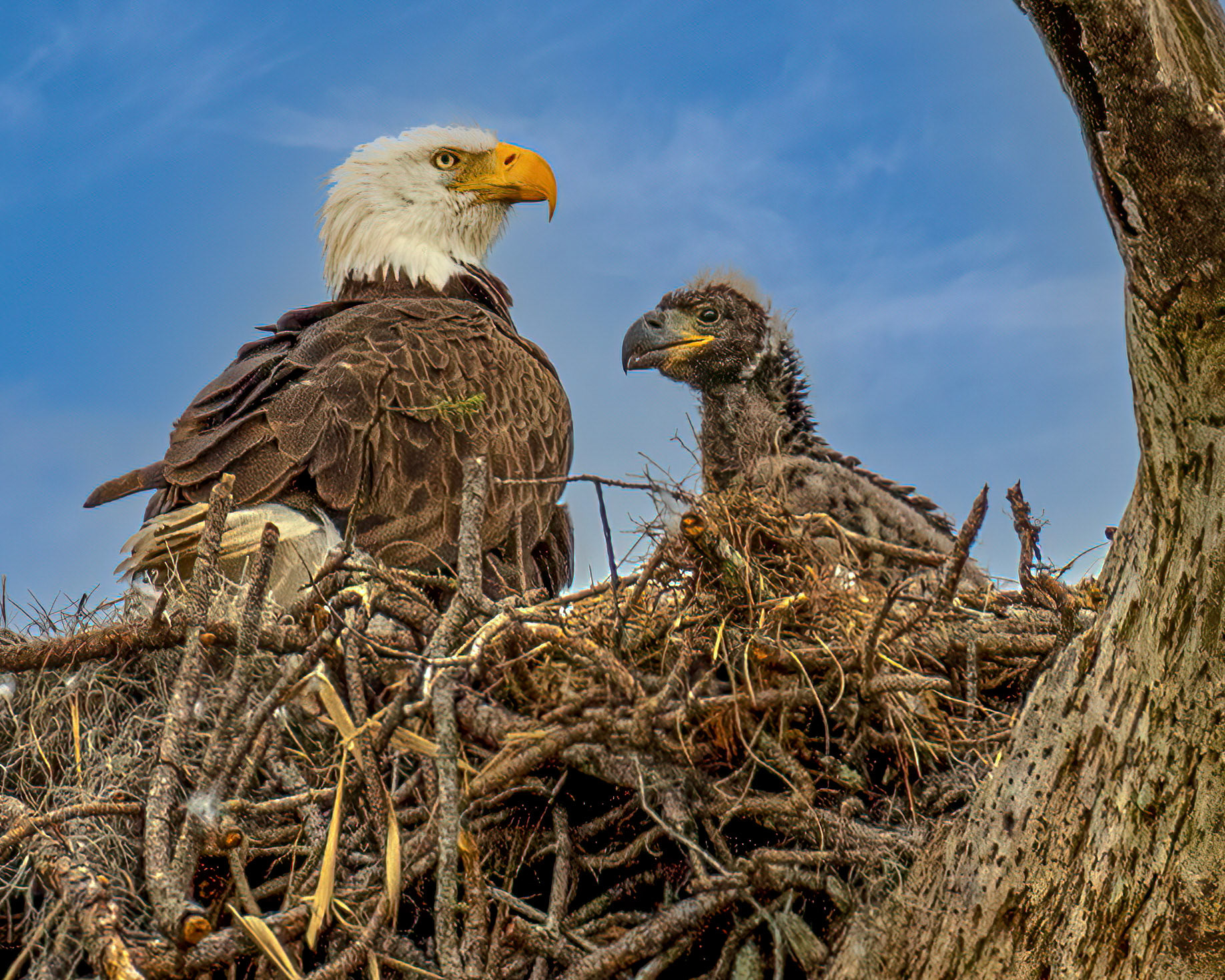
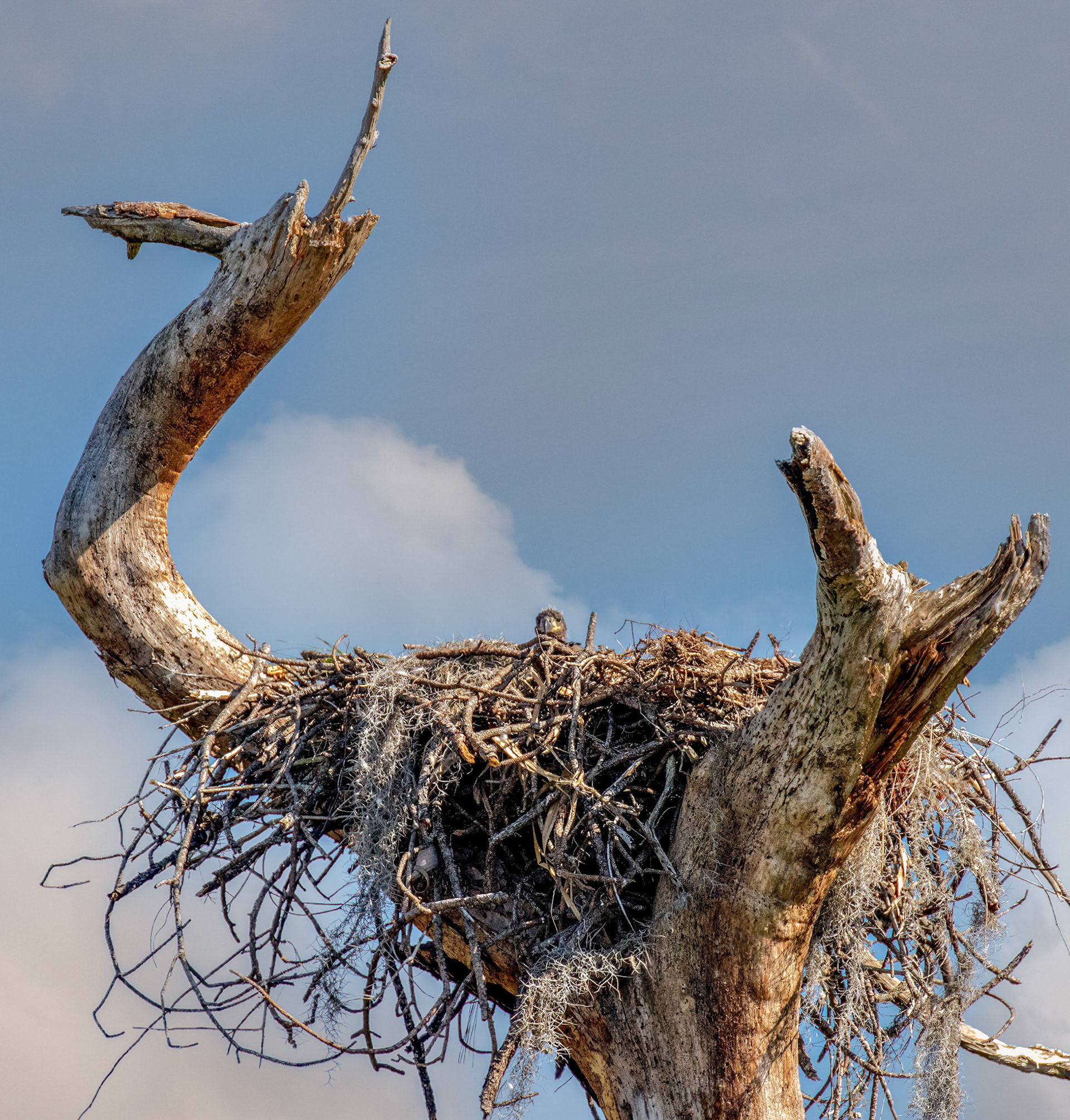
Waiting for mom to come home

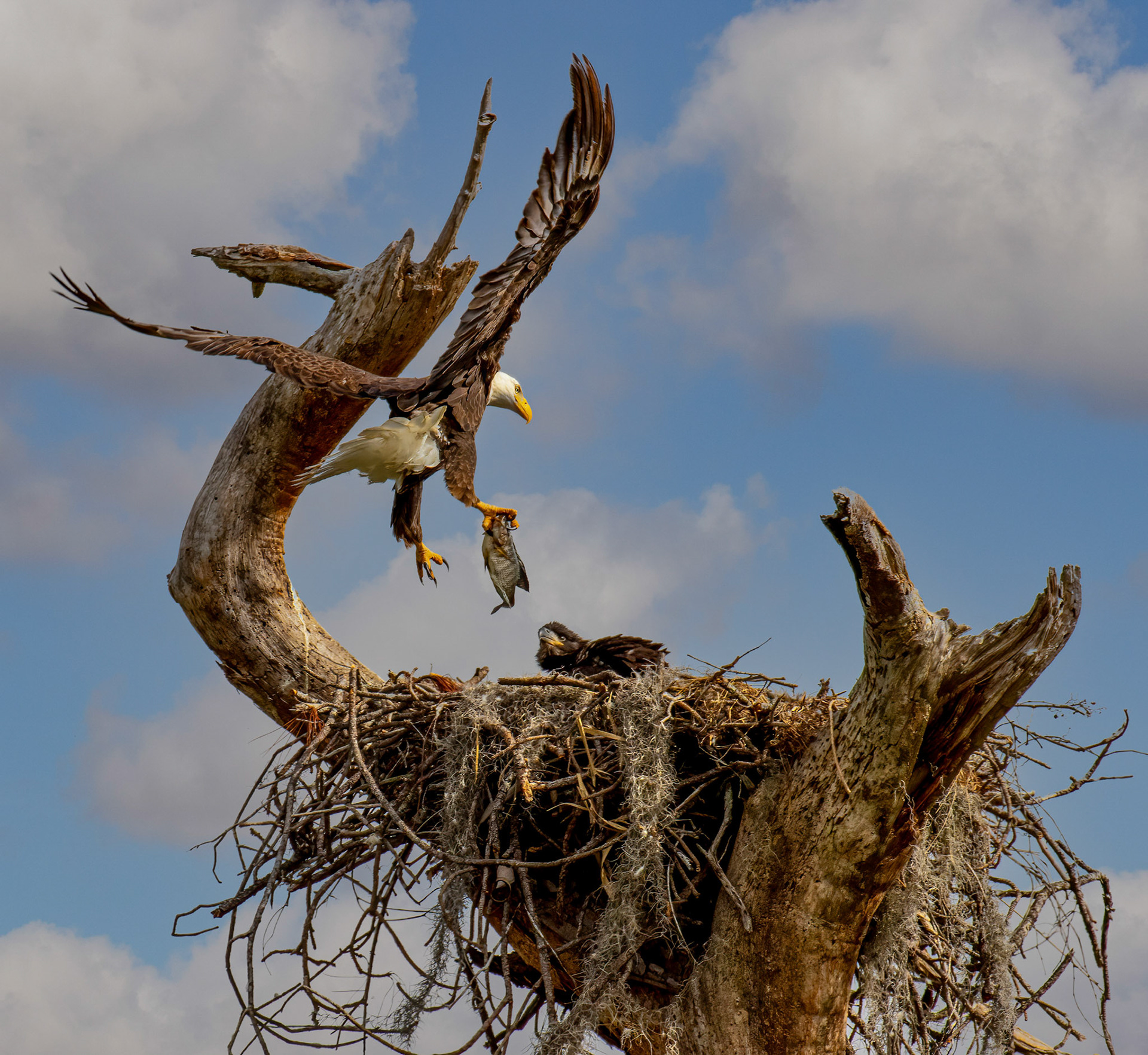
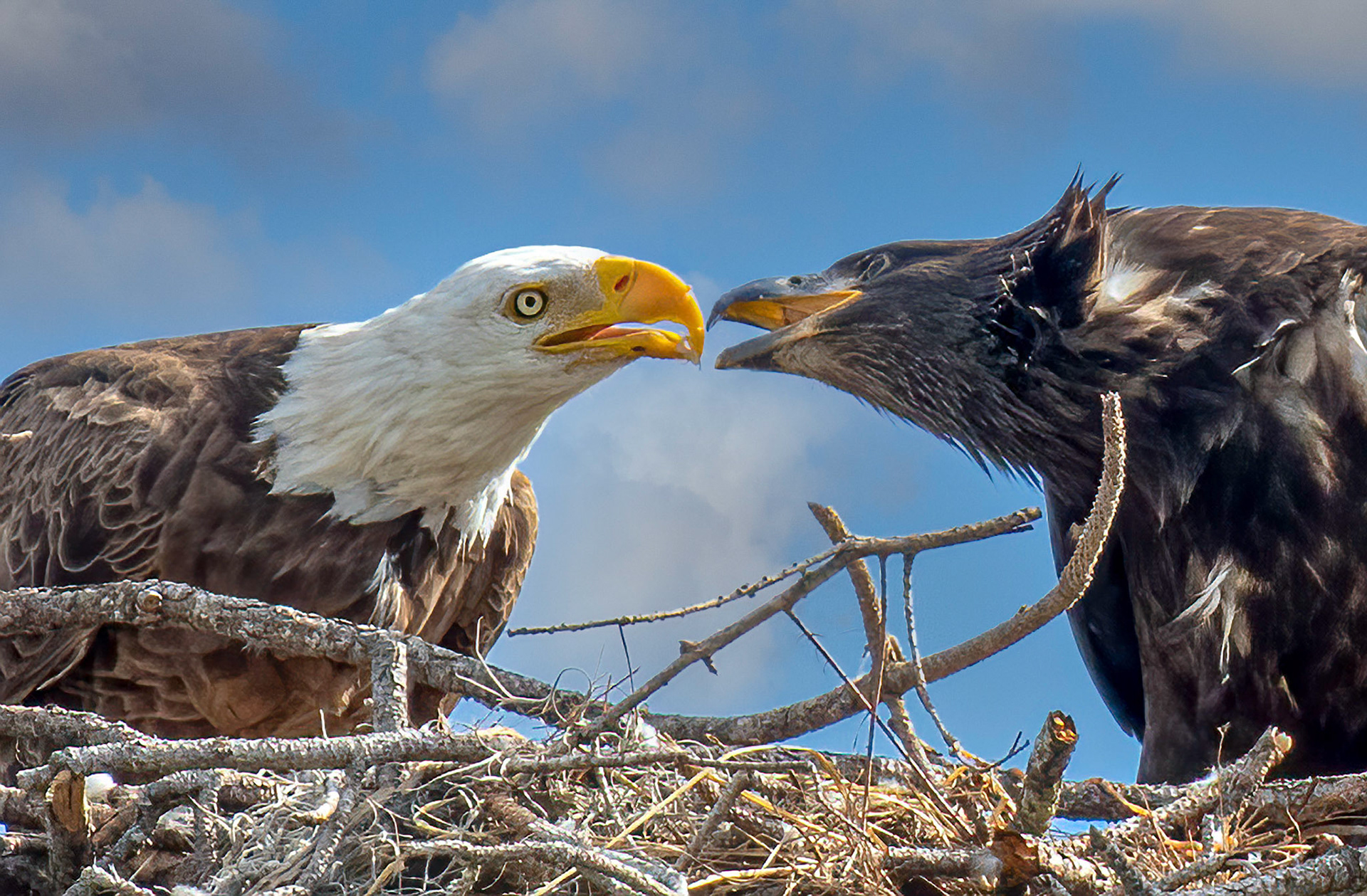
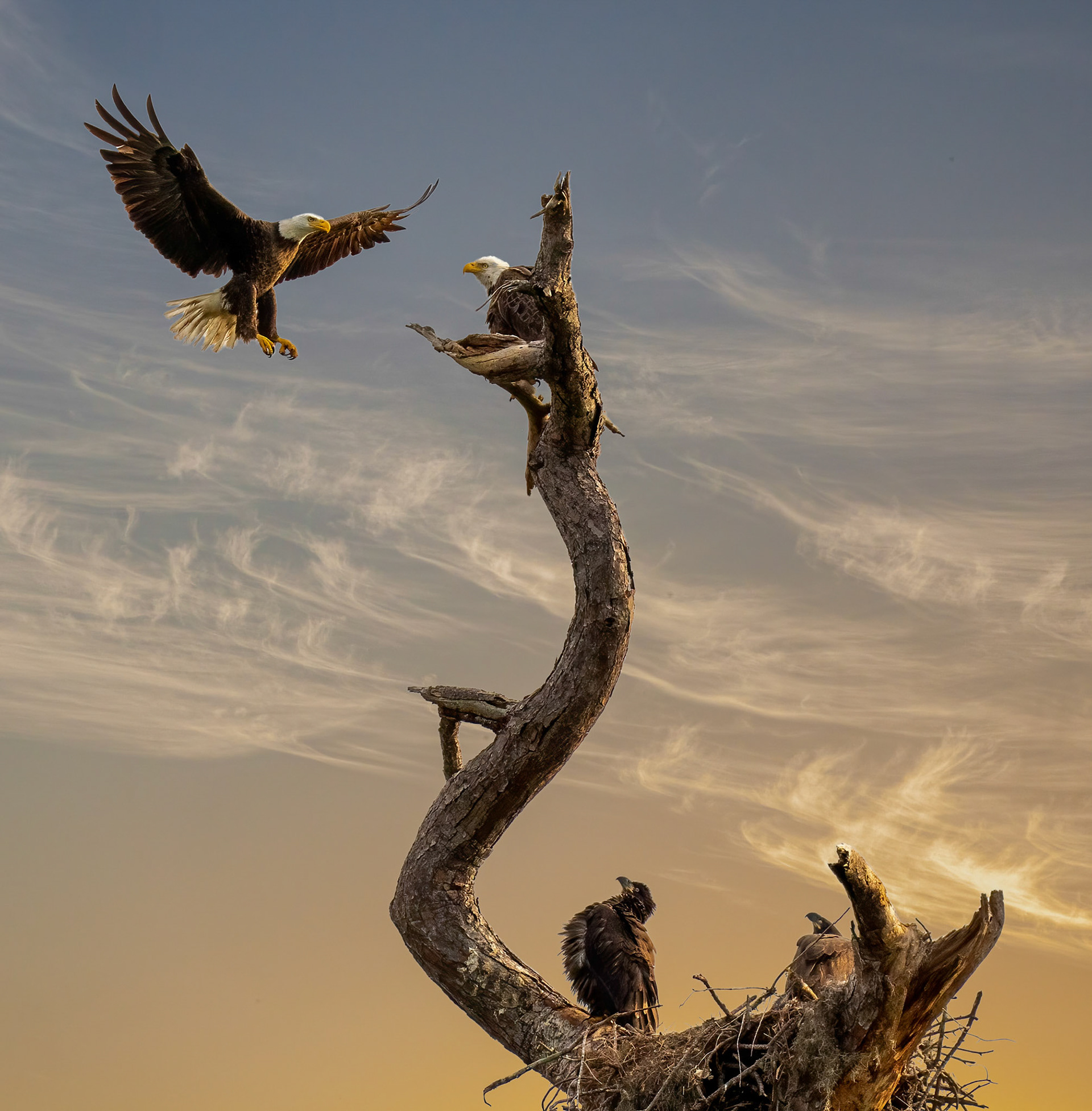



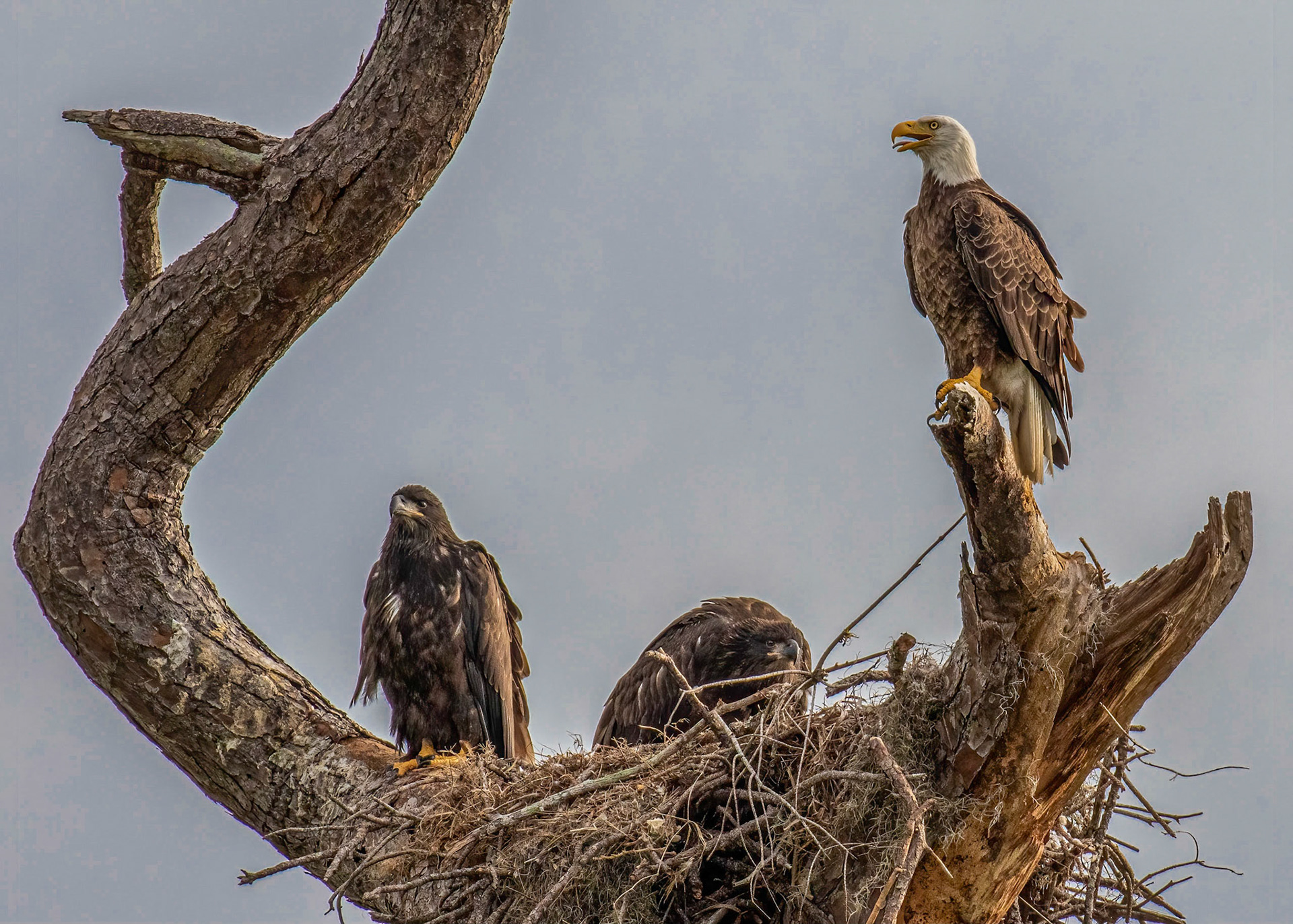
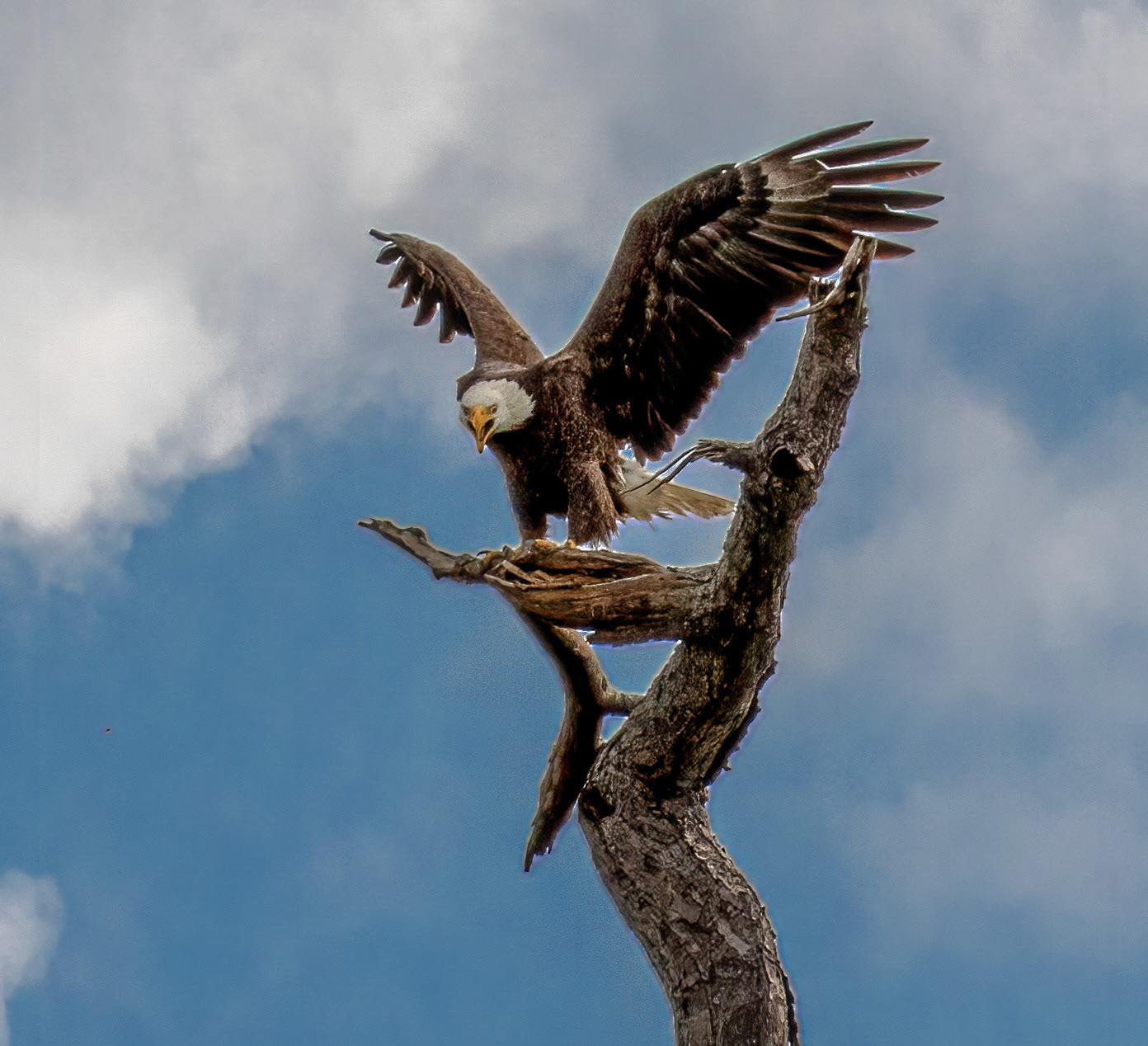







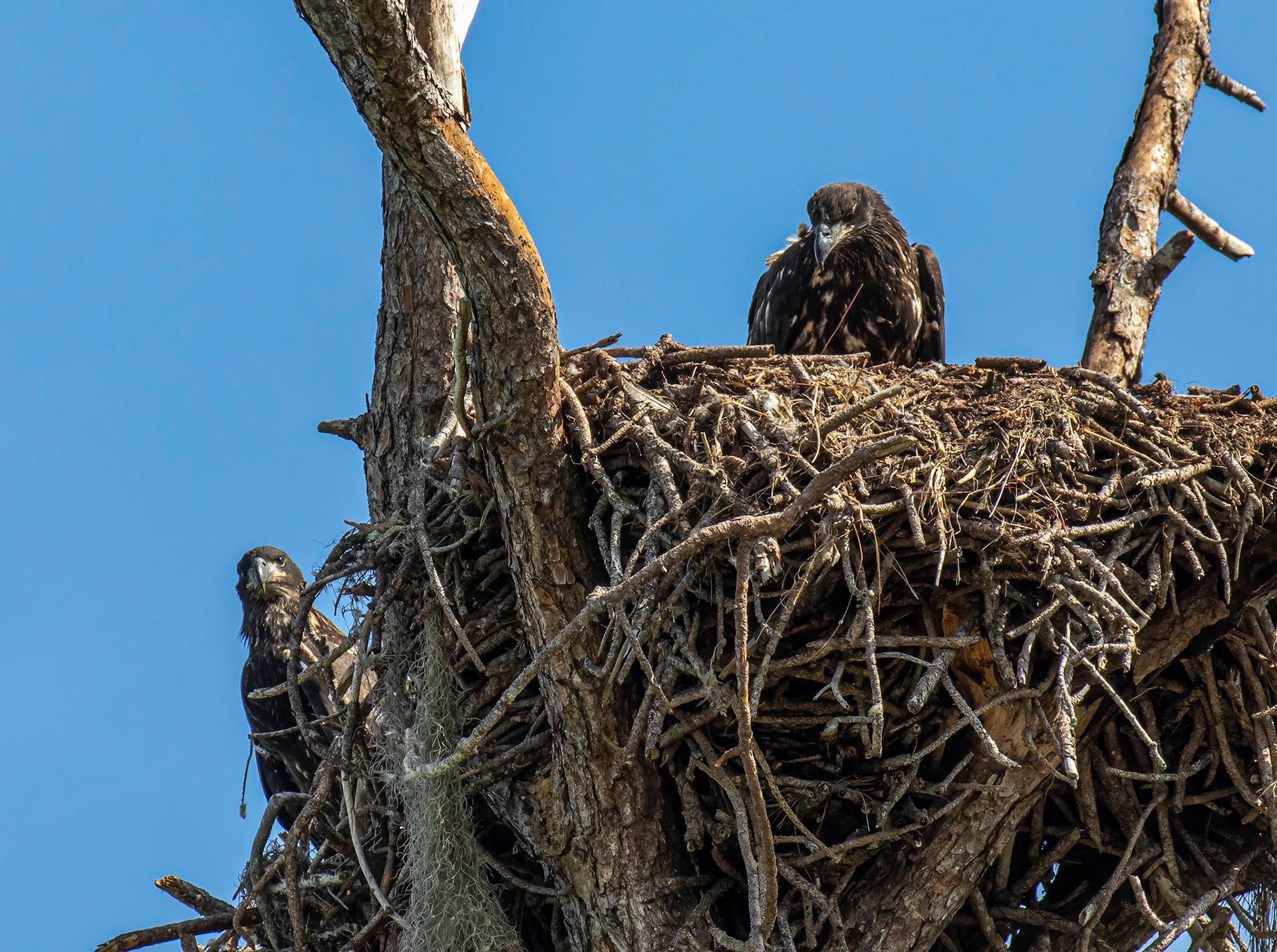





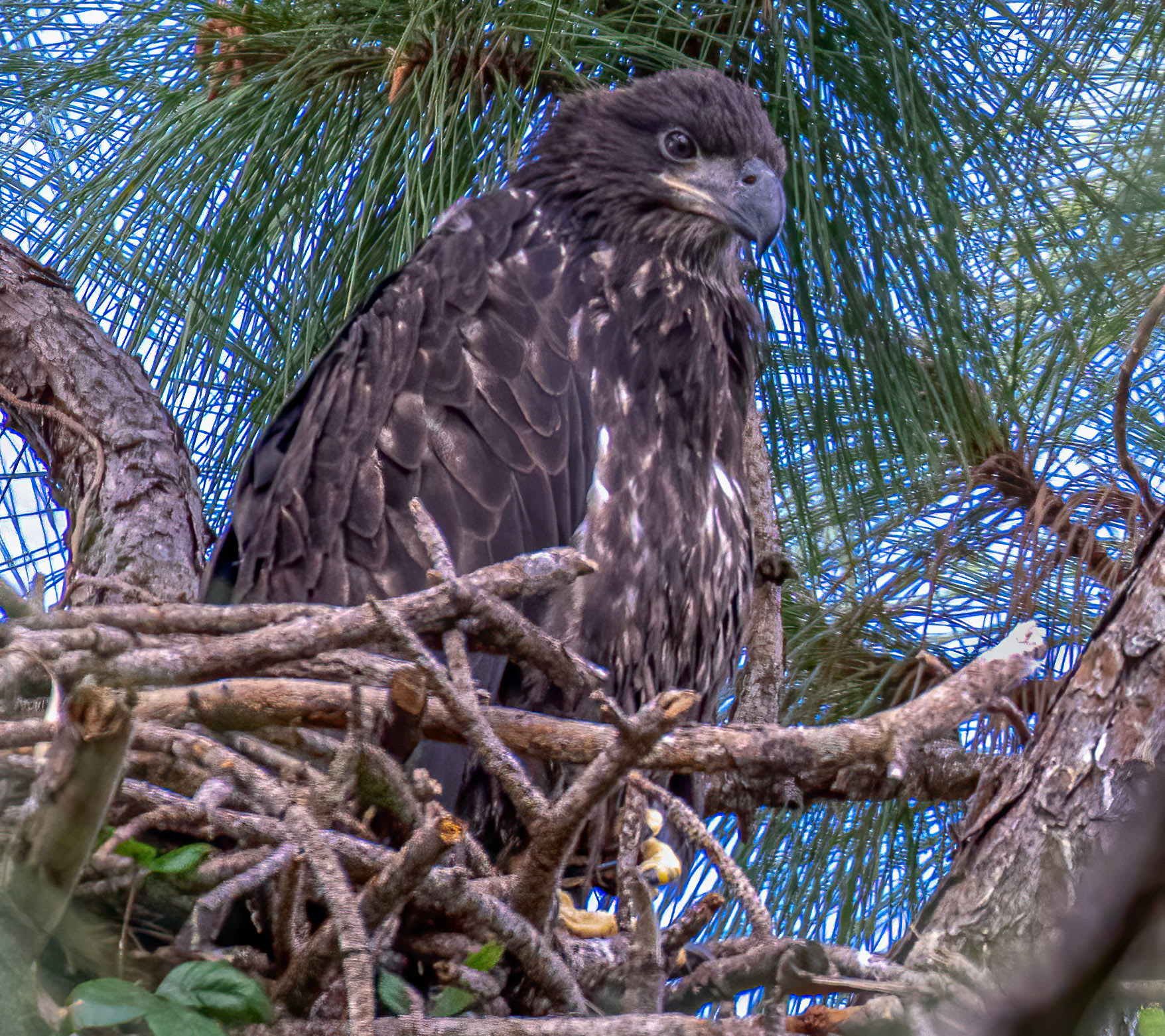














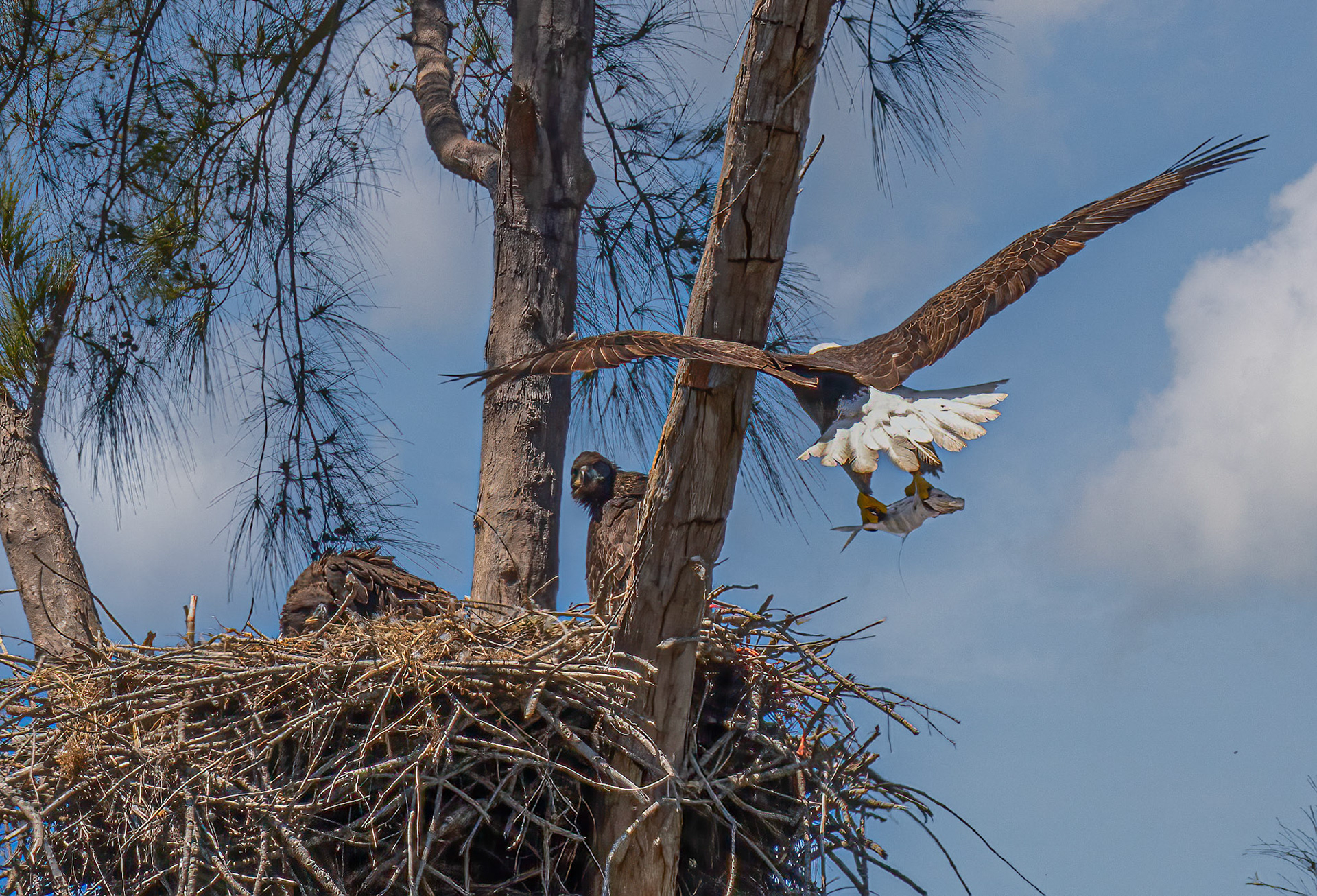


The Bald Eagle has been the national emblem of the United States since 1782. These regal birds aren’t really bald, but their white-feathered heads gleam in contrast to their chocolate-brown body and wings. Once endangered by hunting and pesticides, bald eagles have flourished under government protection. Florida has one of the densest concentrations of nesting bald eagles in the lower 48 states, with an estimated 1,500 nesting pairs. Bald Eagles build some of the largest nests of all birds, typically 5 to 6 feet in diameter and 2 to 4 feet tall. Nests can take up to three months to build, and If they successfully produce young at a nest, they are likely to return to that same nest year after year. Bald Eagle breeding season varies by latitude. In Florida, egg laying may begin in November. They lay between 1 to 3 eggs that hatch from 34 – 36 days. The nesting period is usually 56 to 98 days. Bald Eagles fledge (begin to fly) at about 10-14 weeks. Prior to their first flight, eaglets will flap their wings in the nest or while jumping to an adjacent branch in behavior known as branching. Immature birds have mostly dark heads and tails and do not attain adult plumage for about five years. (The Florida Fish and Wildlife Conservation Commission & The Cornell Lab of Ornithology.)


















































